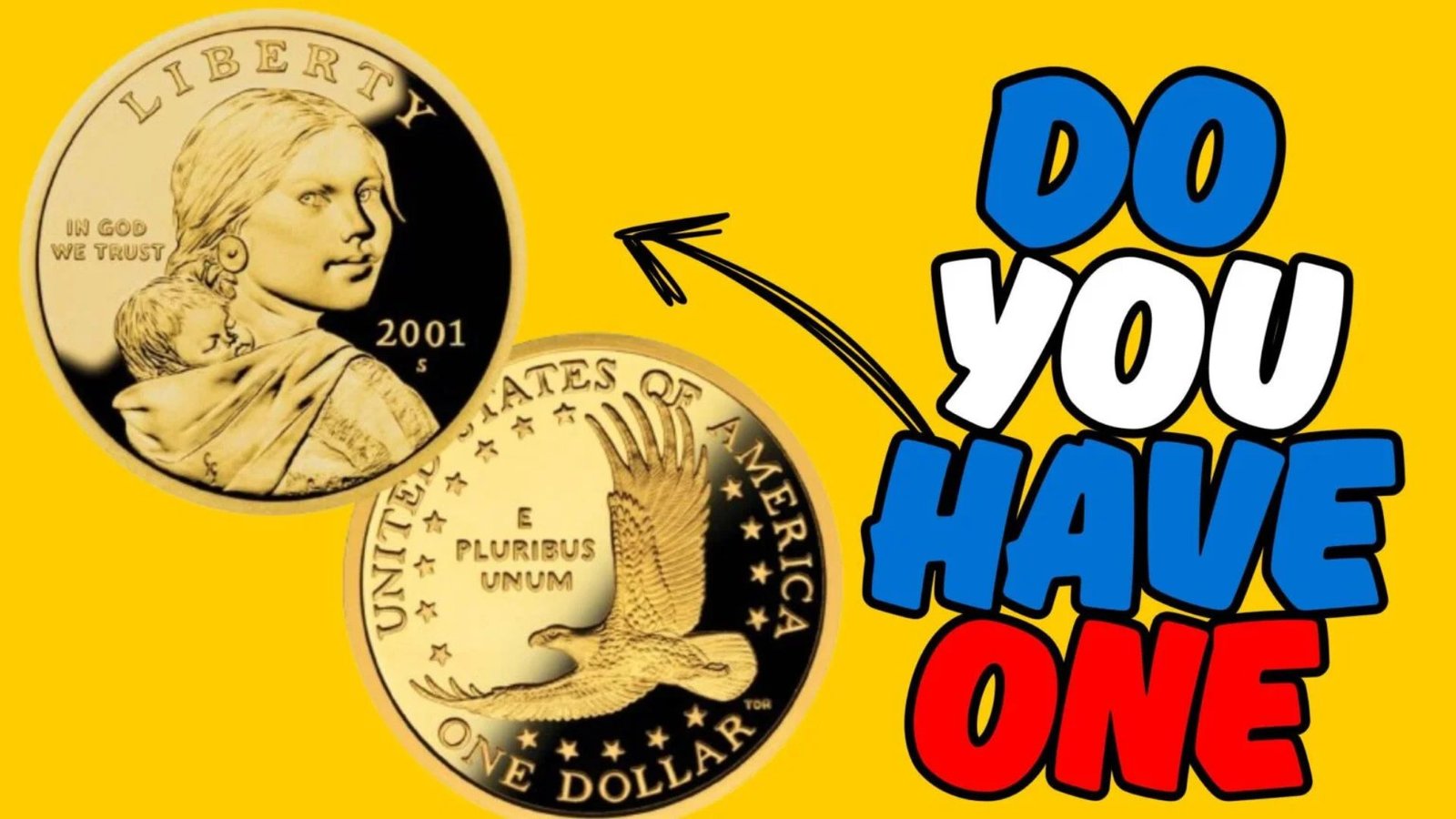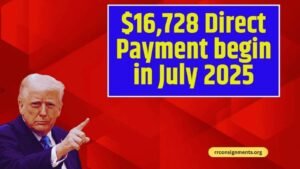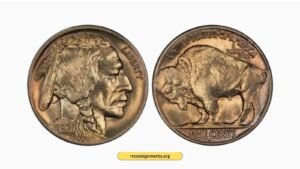Imagine finding a coin in your pocket that’s worth millions! The Sacagawea dollar, first made in 2000, honors a Native American woman who helped guide the Lewis and Clark expedition. While most of these golden coins are worth just $1, a rare version called the “mule error” sold for $2.1 million in 2025 due to a unique minting mistake. Another special type, the “Cheerios Dollar,” is also valuable. This article will guide you on how to spot these rare coins, where to find them, and what to do if you think you have one. Let’s dive into this treasure hunt!
What Makes the Sacagawea Dollar Special?
The Sacagawea dollar is a golden-colored coin introduced by the U.S. Mint in 2000 to replace the Susan B. Anthony dollar. It features Sacagawea, a Shoshone woman, carrying her baby on the front (obverse) and an eagle with 17 stars on the back (reverse). The coin’s golden hue comes from a manganese brass layer over a copper core. While millions were made, a few rare versions stand out due to errors or special promotions, making them worth a fortune.
The $2.1 Million Mule Error Coin
The most valuable Sacagawea dollar is the “mule error,” a coin with a mistake where the front shows Sacagawea, but the back has the eagle design from a Washington quarter. This mix-up happened at the Philadelphia Mint in 2000, and only about 20 of these coins are known to exist. One sold for $2.1 million in 2025 because of its rarity and unique story.
The Cheerios Dollar
Another rare version is the “Cheerios Dollar,” part of a 2000 promotion where the U.S. Mint put 5,500 Sacagawea dollars in Cheerios cereal boxes. These coins have extra-detailed tail feathers on the eagle, making them stand out. They can be worth thousands, with some fetching up to $34,500 at auctions.
How to Identify a Rare Sacagawea Dollar
Spotting a rare Sacagawea dollar requires a sharp eye and some simple tools. Here’s how to check your coins:
| Feature to Check | Mule Error Coin | Cheerios Dollar |
|---|---|---|
| Reverse Design | Washington quarter eagle (not Sacagawea eagle) | Sacagawea eagle with extra-detailed tail feathers |
| Weight | About 5.67 grams (like a quarter) | 8.1 grams (standard) |
| Color | Golden, may look slightly off | Bright, shiny golden finish |
| Mint Mark | “P” for Philadelphia | “P” for Philadelphia |
| Year | 2000 | 2000 |
Steps to Spot a Rare Coin
- Check the Back (Reverse): Look at the reverse side. A mule error coin will have the eagle from a Washington quarter, not the Sacagawea eagle with 17 stars. For Cheerios Dollars, use a magnifying glass to spot extra-detailed tail feathers on the eagle.
- Weigh the Coin: Use a precise scale. A mule error weighs about 5.67 grams, like a quarter, while a regular Sacagawea dollar weighs 8.1 grams.
- Inspect the Color and Shine: Mule errors might have an odd color due to the wrong planchet. Cheerios Dollars have a bright, shiny finish from their special production.
- Look for the Mint Mark: Check for a “P” (Philadelphia) mint mark below the year 2000 on the front. Both rare versions were minted in Philadelphia.
- Avoid Cleaning: Never clean a coin, as scratches or damage can lower its value significantly. Store it in a plastic holder to keep it safe.
Where to Find These Rare Coins
Rare Sacagawea dollars could be hiding in everyday places:
- Pocket Change: Check coins from stores, vending machines, or cash transactions.
- Coin Rolls: Get rolls of dollar coins from banks to search through.
- Old Coin Jars: Look in jars or drawers where coins have been saved.
- Cereal Boxes: Unopened Cheerios boxes from 2000 might still hold a Cheerios Dollar.
Since millions of Sacagawea dollars were made, finding a rare one is like finding a needle in a haystack, but it’s possible!
What to Do If You Find a Rare Coin
If you think you’ve found a rare Sacagawea dollar, follow these steps:
- Don’t Spend It: Keep the coin safe and avoid using it.
- Get It Graded: Take it to a professional grading service like PCGS or NGC to verify its authenticity and condition. Grading can confirm if it’s a mule error or Cheerios Dollar.
- Store It Safely: Use a plastic coin holder to protect it from scratches or damage.
- Get a Second Opinion: Before selling, consult multiple coin dealers or auction houses to ensure a fair price.
- Sell Wisely: You can sell through coin shops, auctions, or collectors. Certified coins can fetch thousands or even millions.
Why Are These Coins So Valuable?
The mule error’s value comes from its rarity (only about 20 exist) and the unique minting mistake. The Cheerios Dollar is prized for its limited release and distinct design. Both coins have a fascinating history, making them collector favorites. A high-grade condition (like MS-66 or better) also boosts their value.
Conclusion
The Sacagawea dollar is more than just a $1 coin—it could be a life-changing treasure! By checking the reverse design, weight, and mint mark, you can spot a rare mule error or Cheerios Dollar. Always handle coins carefully and get them professionally graded to confirm their value. Next time you get a golden dollar in change, take a closer look—you might be holding a $2.1 million gem!
FAQs
What is a Sacagawea dollar mule error?
A mule error is a rare Sacagawea dollar from 2000 with the front of a Sacagawea dollar and the back of a Washington quarter due to a minting mistake. Only about 20 are known, making them worth up to $2.1 million.
How do I know if I have a Cheerios Dollar?
Check the eagle’s tail feathers on the back of a 2000-P Sacagawea dollar. If they have extra detail and the coin has a shiny finish, it might be a Cheerios Dollar from the 2000 cereal promotion.
Where can I find a rare Sacagawea dollar?
Look in pocket change, coin rolls from banks, old coin jars, or unopened 2000 Cheerios boxes. They’re rare but still in circulation.
Should I clean my Sacagawea dollar?
No, never clean a coin! Cleaning can cause scratches and lower its value. Store it in a plastic holder instead.
How do I sell a rare Sacagawea dollar?
Get it graded by PCGS or NGC to verify its authenticity, then sell through trusted coin dealers, auctions, or collectors for the best price.




